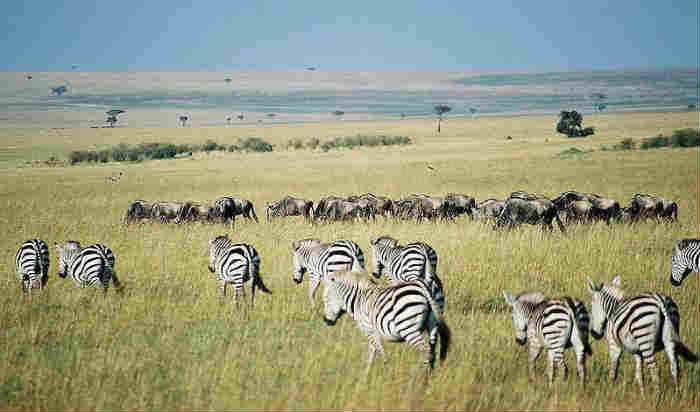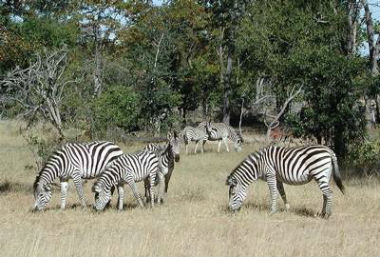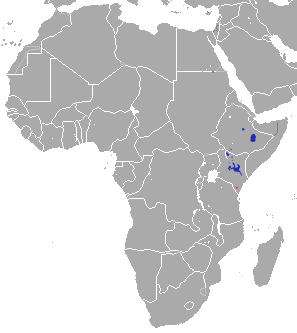Zebra habitat
Where zebras live
Online Biology Dictionary
 Ideal zebra habitat. Burchell's zebras at Mara Masai Reserve, Kenya. Image: Esculapio
Ideal zebra habitat. Burchell's zebras at Mara Masai Reserve, Kenya. Image: Esculapio
EUGENE M. MCCARTHY, PHD
|
|

|
 Zebras aren't restricted to pure grassland
Zebras aren't restricted to pure grassland
Zebras are found in the more arid portions of eastern and southern Africa. They are widespread, but due to the encroachment of humans their geographic range is greatly reduced from what it was in former times.
Zebra habitat varies
 Distribution of Grevy's zebra. Map: Chermundy
Distribution of Grevy's zebra. Map: Chermundy
Zebra habitat can include open plains, semi-desert, open woodlands, and even mountainous regions. This variation occurs because there are three types of zebra, Burchell's zebra (Equus burchelli), Grevy's zebra (Equus grevyi), and the mountain zebra (Equus zebra).¹
Grevy's zebra lives in the most xeric habitat of the three, the sub-desert region of northern Kenya and southern Ethiopia between the range of Burchell's zebra to the south, and the African wild ass to the north. Equus grevyi can live off of tough desert grasses that are inedible to cattle.
Burchell's zebra is found in a more varied range of habitats, ranging from savanna, to open woodland and scrub, to grassland. It also can occur in hilly, or even mountainous, country up to an elevation of 4,400 meters. It's much more dependent on the availability of fresh water than is Grevy's zebra.
As its name suggests, the mountain zebra generally occurs in mountainous or hilly regions. Like Burchell's, most of its diet is composed of grass, with the addition of some browse.
However, since hybridization occurs between all the different types of zebra where they come into natural contact, as well as between zebras and horses in southern Africa, and between zebras and wild asses in the northeast of Africa, it is questionable whether the various zebra types should be treated as separate species or as a single varying species.
|
Related articles:
|
Biologists tend to combine populations under one name when they are found to hybridize, but the application of the rule has been inconsistent.
1. A fourth type of zebra, the quagga, often described as an extinct species, is a probable hybrid between the domestic horse and Burchell's zebra.
|
(zebra × donkey) |
Some zebra facts:Swahili name for a zebra: Punda Milia. Shoulder height: 45-55 inches (Burchell's); 50-60 inches (Grevy's). Weight: 485-550 lbs (Burchell's); 770-990 lbs (Grevy's). Gestation: 12 mos (Burchell's); 13 mos (Grevy's). Predators: Lions, hyaenas. |
Most shared on Macroevolution.net:
Human Origins: Are we hybrids?
On the Origins of New Forms of Life
Mammalian Hybrids
Cat-rabbit Hybrids: Fact or fiction?
Famous Biologists
Dog-cow Hybrids
Prothero: A Rebuttal
Branches of Biology
Dog-fox Hybrids